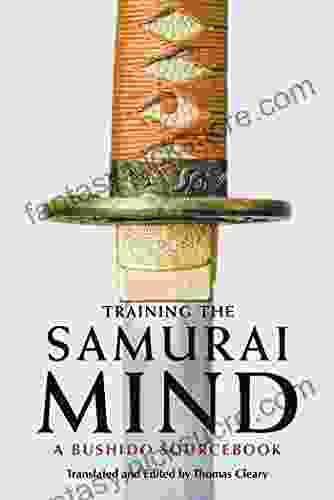Sidemount Diving: The Almost Comprehensive Guide 2nd Edition

Sidemount diving is a scuba diving configuration in which the diver's scuba tanks are mounted on the sides of their body, rather than on their back. This configuration offers a number of advantages over traditional back-mounted diving, including improved buoyancy control, reduced drag, and increased comfort.
Sidemount diving is particularly well-suited for cave diving, wreck diving, and other forms of technical diving. It is also becoming increasingly popular for recreational diving, as more and more divers discover the benefits of this versatile configuration.
The origins of sidemount diving can be traced back to the early days of scuba diving. In the 1950s, cave divers began experimenting with sidemount configurations in order to improve their mobility and reduce the risk of entanglement in tight passages.
4.2 out of 5
| Language | : | English |
| File size | : | 32268 KB |
| Text-to-Speech | : | Enabled |
| Screen Reader | : | Supported |
| Enhanced typesetting | : | Enabled |
| Word Wise | : | Enabled |
| Print length | : | 640 pages |
In the 1980s, sidemount diving gained popularity among wreck divers. Wreck divers found that sidemount configurations allowed them to more easily penetrate wrecks and maneuver around obstacles.
Today, sidemount diving is used by divers all over the world for a variety of purposes. It is a particularly popular configuration for cave divers, wreck divers, and technical divers. However, it is also becoming increasingly popular for recreational diving.
There are a number of advantages to sidemount diving over traditional back-mounted diving. These advantages include:
- Improved buoyancy control. With sidemount tanks, the diver's weight is distributed more evenly around their body. This makes it easier to maintain neutral buoyancy and control their depth.
- Reduced drag. Sidemount tanks are mounted closer to the diver's body than back-mounted tanks. This reduces drag and makes it easier to swim through the water.
- Increased comfort. Sidemount tanks are less likely to cause back pain and discomfort than back-mounted tanks. This is because the weight of the tanks is distributed more evenly across the diver's body.
- Versatility. Sidemount diving is a versatile configuration that can be used for a variety of diving applications. It is particularly well-suited for cave diving, wreck diving, and technical diving. However, it is also becoming increasingly popular for recreational diving.
There are also some disadvantages to sidemount diving that should be considered before making the switch to this configuration. These disadvantages include:
- Increased equipment cost. Sidemount diving requires specialized equipment, including a sidemount harness, tanks, and regulators. This equipment can be more expensive than back-mounted diving equipment.
- Learning curve. Sidemount diving requires a different set of skills and techniques than back-mounted diving. Divers who are new to sidemount diving should take a training course from a qualified instructor.
- Limited tank capacity. Sidemount tanks are typically smaller than back-mounted tanks. This can limit the diver's bottom time.
The following equipment is required for sidemount diving:
- Sidemount harness. The sidemount harness is a specialized harness that is designed to hold the diver's tanks securely in place on their sides.
- Tanks. Sidemount tanks are typically smaller than back-mounted tanks. They are usually made of aluminum or steel.
- Regulators. Sidemount divers use two regulators, one for each tank. The regulators are connected to the tanks via short hoses.
- Buoyancy compensator device (BCD). The BCD is used to control the diver's buoyancy. The BCD is typically mounted on the diver's chest or back.
- Weight system. The weight system is used to add weight to the diver's body. The weight system is typically attached to the diver's harness.
Divers who are new to sidemount diving should take a training course from a qualified instructor. The course will teach the diver the proper skills and techniques for sidemount diving. The course will also cover the safety considerations associated with sidemount diving.
Sidemount diving is a safe and rewarding form of scuba diving. However, there are some safety considerations that should be kept in mind. These considerations include:
- Proper training. Divers who are new to sidemount diving should take a training course from a qualified instructor. The course will teach the diver the proper skills and techniques for sidemount diving. The course will also cover the safety considerations associated with sidemount diving.
- Proper equipment. Sidemount divers should use the proper equipment for sidemount diving. This equipment includes a sidemount harness, tanks, regulators, a BCD, and a weight system.
- Proper buoyancy control. Sidemount divers should have good buoyancy control. This is important for maintaining neutral buoyancy and controlling their depth.
- Proper gas management. Sidemount divers should have good gas management skills. This is important for managing their gas supply and avoiding decompression sickness.
Sidemount diving is a versatile and rewarding form of scuba diving. It offers a number of advantages over traditional back-mounted diving, including improved buoyancy control, reduced drag, and increased comfort. Sidemount diving is particularly well-suited for cave diving, wreck diving, and technical diving. However, it is also becoming increasingly popular for recreational diving.
If you are interested in learning more about sidemount diving, I encourage you to take a training course from a qualified instructor. The course will teach you the proper skills and techniques for sidemount diving. The course will also cover the safety considerations associated with sidemount diving.
4.2 out of 5
| Language | : | English |
| File size | : | 32268 KB |
| Text-to-Speech | : | Enabled |
| Screen Reader | : | Supported |
| Enhanced typesetting | : | Enabled |
| Word Wise | : | Enabled |
| Print length | : | 640 pages |
Do you want to contribute by writing guest posts on this blog?
Please contact us and send us a resume of previous articles that you have written.
 Fiction
Fiction Non Fiction
Non Fiction Romance
Romance Mystery
Mystery Thriller
Thriller SciFi
SciFi Fantasy
Fantasy Horror
Horror Biography
Biography Selfhelp
Selfhelp Business
Business History
History Classics
Classics Poetry
Poetry Childrens
Childrens Young Adult
Young Adult Educational
Educational Cooking
Cooking Travel
Travel Lifestyle
Lifestyle Spirituality
Spirituality Health
Health Fitness
Fitness Technology
Technology Science
Science Arts
Arts Crafts
Crafts DIY
DIY Gardening
Gardening Petcare
Petcare Ryan Johnston
Ryan Johnston Herbert Dorsey
Herbert Dorsey Jackie Brown
Jackie Brown Michael Lempert
Michael Lempert Vukota Boljanovic
Vukota Boljanovic Vernon G Zunker
Vernon G Zunker Dan Murphy
Dan Murphy Charles Goodwill
Charles Goodwill Carolyn Schulz
Carolyn Schulz Ross Edgley
Ross Edgley Gianna Sobol
Gianna Sobol Morgan Oostra
Morgan Oostra Emma Griffin
Emma Griffin Simon Baron Cohen
Simon Baron Cohen Sara Dyer
Sara Dyer Kat Kruger
Kat Kruger Megan Mcgrory Massaro
Megan Mcgrory Massaro Elizabeth Thompson
Elizabeth Thompson Jacques Devore
Jacques Devore Henry Charles Lea
Henry Charles Lea Lisa Dorfman
Lisa Dorfman Fodor S Travel Guides
Fodor S Travel Guides Kasey Edwards
Kasey Edwards Simon Buxton
Simon Buxton Ta Nehisi Coates
Ta Nehisi Coates James R Payne
James R Payne Yossi Ghinsberg
Yossi Ghinsberg Joie Jager Hyman
Joie Jager Hyman Pedro Urvi
Pedro Urvi Christian Smith
Christian Smith Michael W Eysenck
Michael W Eysenck Paul Francis
Paul Francis Brian Crist
Brian Crist Suzannah Rowntree
Suzannah Rowntree Aylette Jenness
Aylette Jenness Betsy Herman
Betsy Herman J D Gauchat
J D Gauchat Olivia Gordon
Olivia Gordon Gary Dean Quesenberry
Gary Dean Quesenberry Mary Griffith
Mary Griffith Janice Selekman
Janice Selekman Steve Biddulph
Steve Biddulph Chris Napier
Chris Napier Bex Gunn
Bex Gunn Katie Singer
Katie Singer Erin Mcrae
Erin Mcrae Elsevier
Elsevier Mark Young
Mark Young Marc Bona
Marc Bona Kasun Indrasiri
Kasun Indrasiri Ellen Schuthof Lesmeister
Ellen Schuthof Lesmeister Bjorn Kiggen
Bjorn Kiggen Laurie Rubin
Laurie Rubin Dick Edie
Dick Edie Bill Patton
Bill Patton Neil D Jespersen
Neil D Jespersen James Alexander Currie
James Alexander Currie Doug Scott
Doug Scott Tom Dodd
Tom Dodd Dan Blanchard
Dan Blanchard Shelby Mahurin
Shelby Mahurin Dawn Hadley
Dawn Hadley Sue Enquist
Sue Enquist Bill Streever
Bill Streever Robert Greene
Robert Greene Dan Garner
Dan Garner Heather Long
Heather Long Mark Vanhoenacker
Mark Vanhoenacker Gregg Jackson
Gregg Jackson Chris Fischer
Chris Fischer Pat Cohen
Pat Cohen Felicity Aston
Felicity Aston Ted Kaczynski
Ted Kaczynski John H Holland
John H Holland Adiba Jaigirdar
Adiba Jaigirdar Sam Harris
Sam Harris Joseph Edminister
Joseph Edminister Jessica Taylor
Jessica Taylor Freddie Fernandez
Freddie Fernandez Robert Bruce Thompson
Robert Bruce Thompson Mike Gibson
Mike Gibson Carlos Castaneda
Carlos Castaneda Mindy Mcginnis
Mindy Mcginnis Kristin N Spencer
Kristin N Spencer Valeria Ray
Valeria Ray Harlan Coben
Harlan Coben Jeremy Paxman
Jeremy Paxman Robert Byron
Robert Byron Elizabeth King
Elizabeth King Paula Yoo
Paula Yoo David E Stuart
David E Stuart Claire Russell
Claire Russell Bill Karwin
Bill Karwin Ian Wilson
Ian Wilson J T Williams
J T Williams Oscar Nilson
Oscar Nilson Michael Matthews
Michael Matthews Sandra Davidson
Sandra Davidson James Dashner
James Dashner Sophia Freeman
Sophia Freeman Cherie Dimaline
Cherie Dimaline Cj Andersen
Cj Andersen P J E Peebles
P J E Peebles Tina Cassidy
Tina Cassidy Charles A Rhodus
Charles A Rhodus Phil Robertson
Phil Robertson Hayley Mitchell Haugen
Hayley Mitchell Haugen Vanessa Lapointe
Vanessa Lapointe Michael Sullivan
Michael Sullivan Jennifer Shannon
Jennifer Shannon Colin Thubron
Colin Thubron Kindle Edition
Kindle Edition Gary Player
Gary Player Max Lugavere
Max Lugavere Bill Gutman
Bill Gutman Martin Davies
Martin Davies Frederica Relly
Frederica Relly Jessica Wiebe
Jessica Wiebe Charles Simpson
Charles Simpson Kevin Marx
Kevin Marx Jakub Marian
Jakub Marian J Robert King
J Robert King Marty Gitlin
Marty Gitlin Editors Of Sports Illustrated
Editors Of Sports Illustrated Linda D Dahl
Linda D Dahl Alan Lawrence Sitomer
Alan Lawrence Sitomer David Nirenberg
David Nirenberg Dylan Tomine
Dylan Tomine Richard Rohr
Richard Rohr Dr Nancy L Nolan
Dr Nancy L Nolan Jim Greenwood
Jim Greenwood Kevin Sverduk
Kevin Sverduk Bill Moeller
Bill Moeller Helen Irlen
Helen Irlen Marion Zimmer Bradley
Marion Zimmer Bradley Jacqueline B Persons
Jacqueline B Persons Bill Hammack
Bill Hammack Jeff Wheeler
Jeff Wheeler Leah Day
Leah Day Doug Fletcher
Doug Fletcher Luciano Floridi
Luciano Floridi William F Keegan
William F Keegan Michael D Alessio
Michael D Alessio Jared Derksen
Jared Derksen Jen Castleberry
Jen Castleberry Issai Chozanshi
Issai Chozanshi Sue L Hamilton
Sue L Hamilton Jennifer Kolari
Jennifer Kolari Rick Reilly
Rick Reilly Laurence Price
Laurence Price S W Wilcox
S W Wilcox Pat Drake
Pat Drake Tony Ortega
Tony Ortega Shannon Sovndal
Shannon Sovndal Mark Lehner
Mark Lehner Joann Cianciulli
Joann Cianciulli Ingrid Chalufour
Ingrid Chalufour John C Norcross
John C Norcross Jamie Aten
Jamie Aten John Mccollister
John Mccollister Editors Of Garden And Gun
Editors Of Garden And Gun Sharon Bergen
Sharon Bergen Zavonda Vinson Parrish
Zavonda Vinson Parrish Dawn Huebner
Dawn Huebner Tiffany Bergin
Tiffany Bergin Dinah Bucholz
Dinah Bucholz Ian Tuhovsky
Ian Tuhovsky Dashka Slater
Dashka Slater Mark Booth
Mark Booth Tom Humphrey
Tom Humphrey Yau Ming Ng Thompson
Yau Ming Ng Thompson Richard W Fisher
Richard W Fisher Lucas Bessire
Lucas Bessire Holly Donahue Singh
Holly Donahue Singh Charlie Craven
Charlie Craven Kristopher Martel
Kristopher Martel Jeffrey Lindsey
Jeffrey Lindsey Joshua Foer
Joshua Foer Melissa Abramovitz
Melissa Abramovitz Helen Clarke
Helen Clarke Patrick Mcginty
Patrick Mcginty Beck Weathers
Beck Weathers Megan Don
Megan Don Greg Witt
Greg Witt Peter Jackson
Peter Jackson Tara Bianca
Tara Bianca Ron Elbe
Ron Elbe Bode Miller
Bode Miller Henry Nicholls
Henry Nicholls Mike Veny
Mike Veny Jamie Foxx
Jamie Foxx Maggi Savin Baden
Maggi Savin Baden Kevin C Kelleher Md Md
Kevin C Kelleher Md Md Thomas Bailey
Thomas Bailey Erin Mckittrick
Erin Mckittrick Robert A Pelcovits
Robert A Pelcovits Leland Chant
Leland Chant Silvia Dunn
Silvia Dunn Wendy Doniger
Wendy Doniger Daniele Benedettelli
Daniele Benedettelli T Whitmore
T Whitmore Farah Heron
Farah Heron Bryan Irwin
Bryan Irwin Charles Duhigg
Charles Duhigg Edwin H Friedman
Edwin H Friedman Manoj Sharma
Manoj Sharma David Joyce
David Joyce Styrling Strother
Styrling Strother Dave Pine
Dave Pine Sara Low
Sara Low Steven M Levy
Steven M Levy Billy Martin
Billy Martin Stephanie Manley
Stephanie Manley Andrea Cremer
Andrea Cremer Donncha Hanna
Donncha Hanna Sandra Berenbaum
Sandra Berenbaum Conway X Bowman
Conway X Bowman Nicole R Taylor
Nicole R Taylor Ezekiel Eversand
Ezekiel Eversand Louis Sachar
Louis Sachar Bill Gladstone
Bill Gladstone Clement Salvadori
Clement Salvadori Kiera Cass
Kiera Cass Joshua Becker
Joshua Becker Joy Hakim
Joy Hakim Craig Chappelow
Craig Chappelow Marsha Vanwynsberghe
Marsha Vanwynsberghe Thad Beery
Thad Beery Chris Ferrie
Chris Ferrie Jane Nelsen
Jane Nelsen Curt Sampson
Curt Sampson Geraldine Van Bueren
Geraldine Van Bueren Zecharia Sitchin
Zecharia Sitchin Jarrett Dapier
Jarrett Dapier Jedd K Parkinson
Jedd K Parkinson Bryan Mann
Bryan Mann Jamie Dumas
Jamie Dumas Sarah Zettel
Sarah Zettel Marisa Imon
Marisa Imon Cheryl Marlene
Cheryl Marlene Karyn D Hall
Karyn D Hall Tim Weston
Tim Weston Carlos Torres
Carlos Torres Bob Duff
Bob Duff Gary Kamiya
Gary Kamiya Paris Williams
Paris Williams Hilary Nangle
Hilary Nangle John Mccannon
John Mccannon Ken Venturi
Ken Venturi Michael Hartman
Michael Hartman D C Haenlien
D C Haenlien Russ Harris
Russ Harris Sabaa Tahir
Sabaa Tahir Rob Casey
Rob Casey Dan Hamilton
Dan Hamilton Holger Schutkowski
Holger Schutkowski G William Barnard
G William Barnard Sang H Kim
Sang H Kim Chris Sajnog
Chris Sajnog Joe Byers
Joe Byers Colleen Graves
Colleen Graves George C Thomas
George C Thomas Genius Reads
Genius Reads Blaine Bartel
Blaine Bartel Steven Hassan
Steven Hassan Lynette Rushton
Lynette Rushton Jane Bottomley
Jane Bottomley Curvebreakers
Curvebreakers Marilee Lebon
Marilee Lebon Zach Schonbrun
Zach Schonbrun Stacie Mahoe
Stacie Mahoe Eric H Cline
Eric H Cline Sheridan Anderson
Sheridan Anderson Justin Lichter
Justin Lichter Herschel Knapp
Herschel Knapp Bill Schneider
Bill Schneider General
General Susan M Orsillo
Susan M Orsillo Zane Grey
Zane Grey Joan Roughgarden
Joan Roughgarden Matt Parker
Matt Parker Frank Giampaolo
Frank GiampaoloR E S
 Rachna Chhachhi
Rachna Chhachhi The Uk Mathematics Trust
The Uk Mathematics Trust Rob Steger
Rob Steger Larry Baush
Larry Baush Evan Purcell
Evan Purcell Bill Nowlin
Bill Nowlin Karen Palacios Jansen
Karen Palacios Jansen Joseph Campbell
Joseph Campbell Bev Pettersen
Bev Pettersen Paul Levy
Paul Levy John Muir Laws
John Muir Laws Irene Mceachen
Irene Mceachen Scarlett Curtis
Scarlett Curtis Rachel Burgess
Rachel Burgess Jake Jacobson
Jake Jacobson Ernest Raymond
Ernest Raymond Rocky Mcelveen
Rocky Mcelveen Michael Volkmar
Michael Volkmar Laura Nowlin
Laura Nowlin Susan Shelby Torrance
Susan Shelby Torrance David E Johnson
David E Johnson Karen Armstrong
Karen Armstrong H P Lovecraft
H P Lovecraft Peter Aitken
Peter Aitken Diana Wynne Jones
Diana Wynne Jones Mercedes Lackey
Mercedes Lackey Bharath Ramsundar
Bharath Ramsundar Phil Genova
Phil Genova Gwendoline Smith
Gwendoline Smith Blake Sebring
Blake Sebring Deborah J Rumsey
Deborah J Rumsey Kent Hrbek
Kent Hrbek Gail Fay
Gail Fay Jacques Steinberg
Jacques Steinberg Bob Glover
Bob Glover Richard B Pelzer
Richard B Pelzer Pete Spencer
Pete Spencer Robert F Burgess
Robert F Burgess Diondre Mompoint
Diondre Mompoint Michael Tlanusta Garrett
Michael Tlanusta Garrett Ross Bonander
Ross Bonander Bill Bennett
Bill Bennett Claudia Mazzucco
Claudia Mazzucco Charlotte E English
Charlotte E English Paul Bellow
Paul Bellow Dan Yaccarino
Dan Yaccarino Michael J Tougias
Michael J Tougias Dr Julissa Hernandez Nd Cnhp
Dr Julissa Hernandez Nd Cnhp Jonathan Crichton
Jonathan Crichton Krista Tippett
Krista Tippett Peter Julius Sloan
Peter Julius Sloan Emma Cannon
Emma Cannon Phoebe Bailey
Phoebe Bailey Matt Doeden
Matt Doeden Fred H Croom
Fred H Croom Dina Nayeri
Dina Nayeri Henry M Cowles
Henry M Cowles Rough Guides
Rough Guides Robert Axelrod
Robert Axelrod Wendy Hinman
Wendy Hinman Sheila Mackechnie Murtha
Sheila Mackechnie Murtha Tiffany Loggins Psyd
Tiffany Loggins Psyd James Patterson
James Patterson Isabel Fonseca
Isabel Fonseca Michael J Epstein
Michael J Epstein T Edward Nickens
T Edward Nickens Gary Nicol
Gary Nicol Callum Roberts
Callum Roberts Special Tactics
Special Tactics Tony Guerra
Tony Guerra Anya Kamenetz
Anya Kamenetz Robert P Beebe
Robert P Beebe Shantel Silbernagel
Shantel Silbernagel Virginia Smith Harvey
Virginia Smith Harvey Bob Duchesne
Bob Duchesne Carson Sievert
Carson Sievert Erin Beaty
Erin Beaty Kenny Dill
Kenny Dill David Halberstam
David Halberstam Sharmila Desai
Sharmila Desai Mike Westerfield
Mike Westerfield Simon Pridmore
Simon Pridmore Matthew Bowling
Matthew Bowling Mosby
Mosby C D Holmes Miller
C D Holmes Miller Al Walsh
Al Walsh Christopher Banecks
Christopher Banecks James P Allen
James P Allen Thomas Cleary
Thomas Cleary Marie Viljoen
Marie Viljoen J Douglas Faires
J Douglas Faires Jojo Siwa
Jojo Siwa Yakima Canutt
Yakima Canutt Dean Keith Simonton
Dean Keith Simonton Lee Gutkind
Lee Gutkind Carl B Tolman
Carl B Tolman Stanislas Dehaene
Stanislas Dehaene Rachael Scdoris
Rachael Scdoris Enzo Tonti
Enzo Tonti Margo Armstrong
Margo Armstrong Stephen L Morgan
Stephen L Morgan Jon M Sweeney
Jon M Sweeney Gavin Weightman
Gavin Weightman Shawn Levy
Shawn LevyMax Youngquist
 Rick Steves
Rick Steves Fiona Danks
Fiona Danks Billy Griffiths
Billy Griffiths Mark Solms
Mark Solms Jelena Bogdanovic
Jelena Bogdanovic Hugh Neill
Hugh Neill Brienne Murk
Brienne Murk Paul Brummell
Paul Brummell Bill Miller
Bill Miller Kate Darling
Kate Darling Daniel J Velleman
Daniel J Velleman David Price
David Price Eric A Weiss Md
Eric A Weiss Md Elizabeth A Stanley
Elizabeth A Stanley Supersummary
Supersummary John Brierley
John Brierley Davi Kopenawa
Davi Kopenawa George Mahood
George Mahood Richard Holmes
Richard Holmes Zigzag English
Zigzag English Rupert Spira
Rupert Spira Melissa Layne
Melissa Layne Jon Loeliger
Jon Loeliger Linda Bauer
Linda Bauer Nrup Parikh
Nrup Parikh Chris Sims
Chris Sims Rabbi Jason Sobel
Rabbi Jason Sobel Meagan Trayler
Meagan Trayler Ginger Sinsabaugh
Ginger Sinsabaugh Elizabeth Winthrop
Elizabeth Winthrop Stephan A Hoeller
Stephan A Hoeller Elliot Kay
Elliot Kay Jitendra Chouksey
Jitendra Chouksey John Kettle
John Kettle Martyn Denscombe
Martyn Denscombe Kate Marchant
Kate Marchant Marcus Brotherton
Marcus Brotherton Clifford A Pickover
Clifford A Pickover Stephen Arterburn
Stephen Arterburn Sanford Holst
Sanford Holst Frank S Ring
Frank S Ring Jessica Denay
Jessica Denay Richard Post
Richard Post Paul Halpern
Paul Halpern Izzy Judd
Izzy Judd Ofer Gal
Ofer Gal James W Finegan
James W Finegan Terry Pratchett
Terry Pratchett Brandon Sanderson
Brandon Sanderson Brad States
Brad States Steve Schwartz
Steve Schwartz Victoria Johnson
Victoria Johnson Deborah Blum
Deborah Blum Sandi Mann
Sandi Mann Scott Wilson
Scott Wilson David Benjamin
David Benjamin Bill Boyum
Bill Boyum Rod Powers
Rod Powers Wanza Leftwich
Wanza Leftwich Max Help Workbooks
Max Help Workbooks Marie Max House
Marie Max House Manly P Hall
Manly P Hall Jackie Bolen
Jackie Bolen R E Skibiski
R E Skibiski Nancy Romita
Nancy Romita Ramona Finn
Ramona Finn Rebekah Nathan
Rebekah Nathan Holly Jackson
Holly Jackson Douglas W Ota
Douglas W Ota Zoe Hana Mikuta
Zoe Hana Mikuta
Light bulbAdvertise smarter! Our strategic ad space ensures maximum exposure. Reserve your spot today!

 Milan KunderaAmerica's Wild Horses: A Majestic and Enduring Symbol of Our Nation's Spirit
Milan KunderaAmerica's Wild Horses: A Majestic and Enduring Symbol of Our Nation's Spirit Julio CortázarFollow ·8.1k
Julio CortázarFollow ·8.1k Jorge AmadoFollow ·13.5k
Jorge AmadoFollow ·13.5k Darren BlairFollow ·5.5k
Darren BlairFollow ·5.5k Thomas PynchonFollow ·18.5k
Thomas PynchonFollow ·18.5k Israel BellFollow ·13.2k
Israel BellFollow ·13.2k Oscar WildeFollow ·2.5k
Oscar WildeFollow ·2.5k Bob CooperFollow ·18.5k
Bob CooperFollow ·18.5k Dean ButlerFollow ·2.1k
Dean ButlerFollow ·2.1k

 Sammy Powell
Sammy PowellBalancing Your Hormones Naturally: Regaining Fertility...
Hormones play a vital role in our...

 Kendall Ward
Kendall WardThe Other Baby Book: A Comprehensive Guide to Baby's...
The Other Baby...

 Kenneth Parker
Kenneth ParkerA Comprehensive Guide to Yoga Sadhana for Mothers:...
Motherhood is a...

 Neil Parker
Neil ParkerInside the Secret Space Programs
An Exposé...
4.2 out of 5
| Language | : | English |
| File size | : | 32268 KB |
| Text-to-Speech | : | Enabled |
| Screen Reader | : | Supported |
| Enhanced typesetting | : | Enabled |
| Word Wise | : | Enabled |
| Print length | : | 640 pages |














